Public Relations Portfolio
Deanna Zemke
PR & Communications Leader
&
Copywriter


My Background
As a PR and communications strategist and brand storyteller, I specialize in elevating brand reputations by aligning events, partnerships and pop culture with strategic content, social media and influencer engagement. My current focus is on providing PR-driven copywriting for a variety of marketing needs, including website copywriting and social media strategy.
With over a decade of experience at Tiffany & Co., I have developed and executed event campaign strategies that garnered significant media coverage for store openings and product launches. My professional journey includes ten years at global public relations agencies across the San Francisco Bay Area to New York City. During this time, I honed my skills in brand marketing and corporate communications, securing media coverage, writing press materials and positioning leading experts to enhance brand visibility among target audiences.
My experience spans both B2C and B2B sectors, working with brands in education technology, Internet security, e-commerce (including beauty and music), HR consultancy, retail and fashion. Some of the notable brands I’ve worked with include Apple, Target, FedEx, eBay and Yahoo! HotJobs.
Public Relations Work Overview
This portfolio showcases the public relations strategies, events and campaigns I have orchestrated to secure media coverage, enhance brand awareness, build reputations and promote corporate thought leadership.
To see examples of my PR writing -- including press releases, media pitches, media advisories, bios and case studies -- please visit my website:
Deanna Zemke PR & Content Copywriting.
Click through the featured categories:
Tiffany & Co.
Events PR & Marketing
Achieving Media Awareness through Event Storytelling, Brand Positioning, Influencers, Partners & Unique Experiences
Promoting Beverly Hills Store Opening


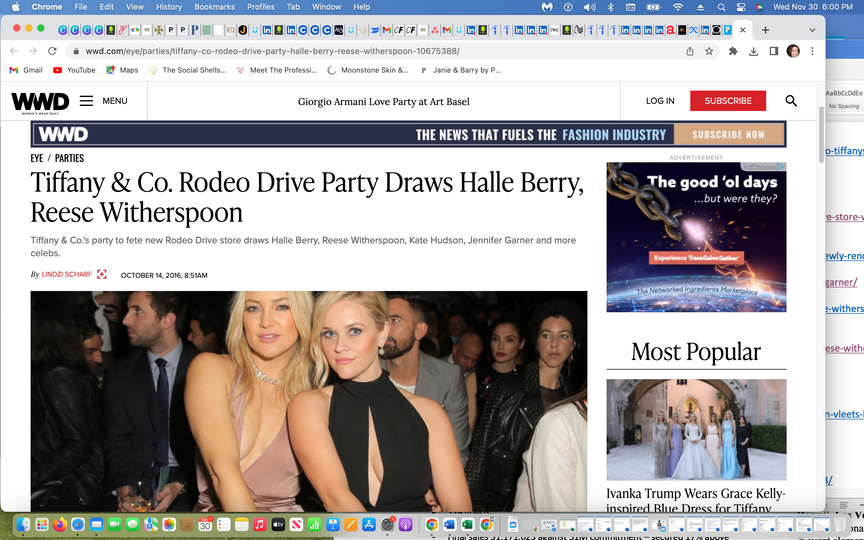

OBJECTIVE
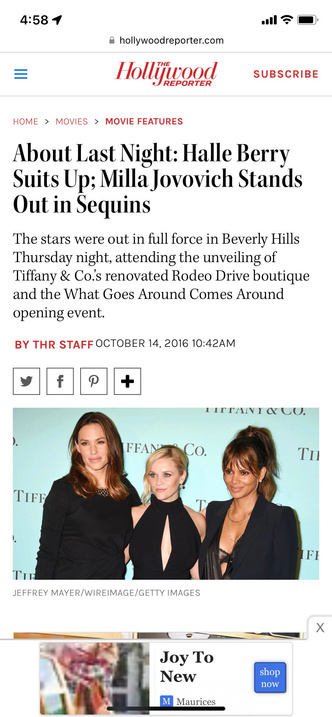
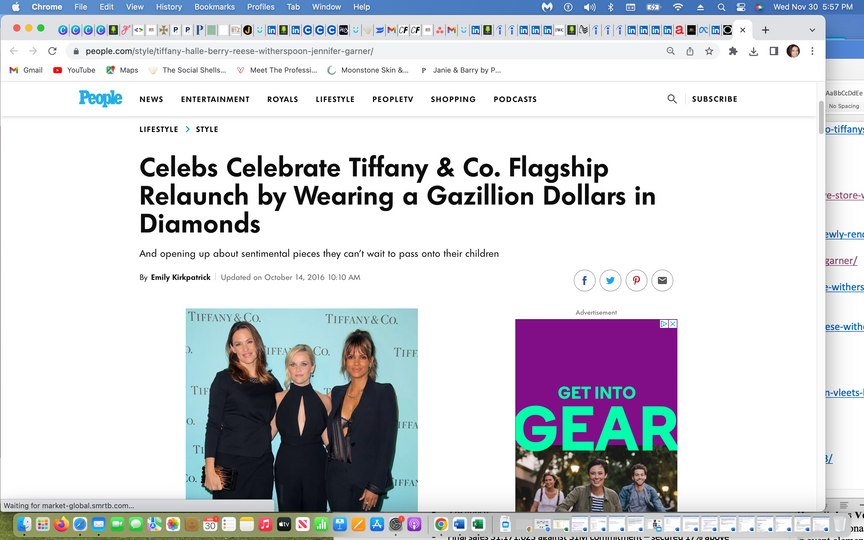
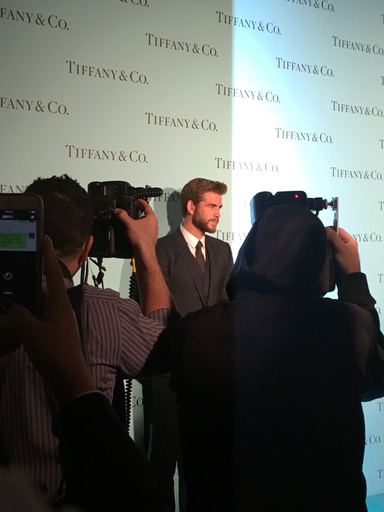
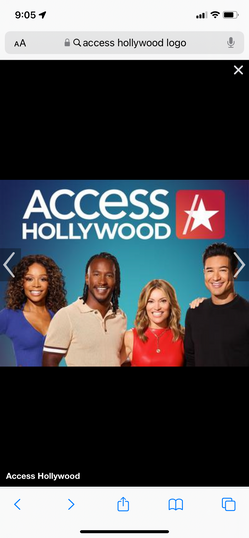
Generate awareness to the reopening of the Beverly Hills store and achieve $1M in sales opening weekend with event experiences.
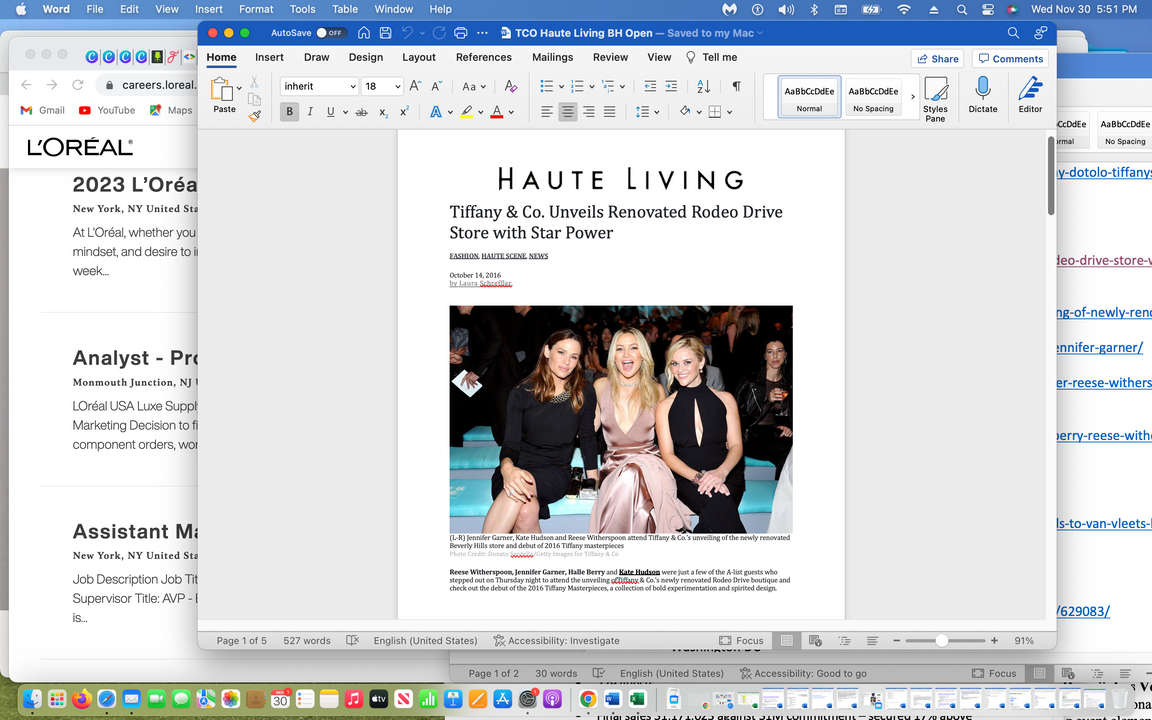
STRATEGY
Create live event to position store as:
- Go-to luxury destination
- Flagship store of the West
- Fashionable and current but instilled in tradition.
TACTICS

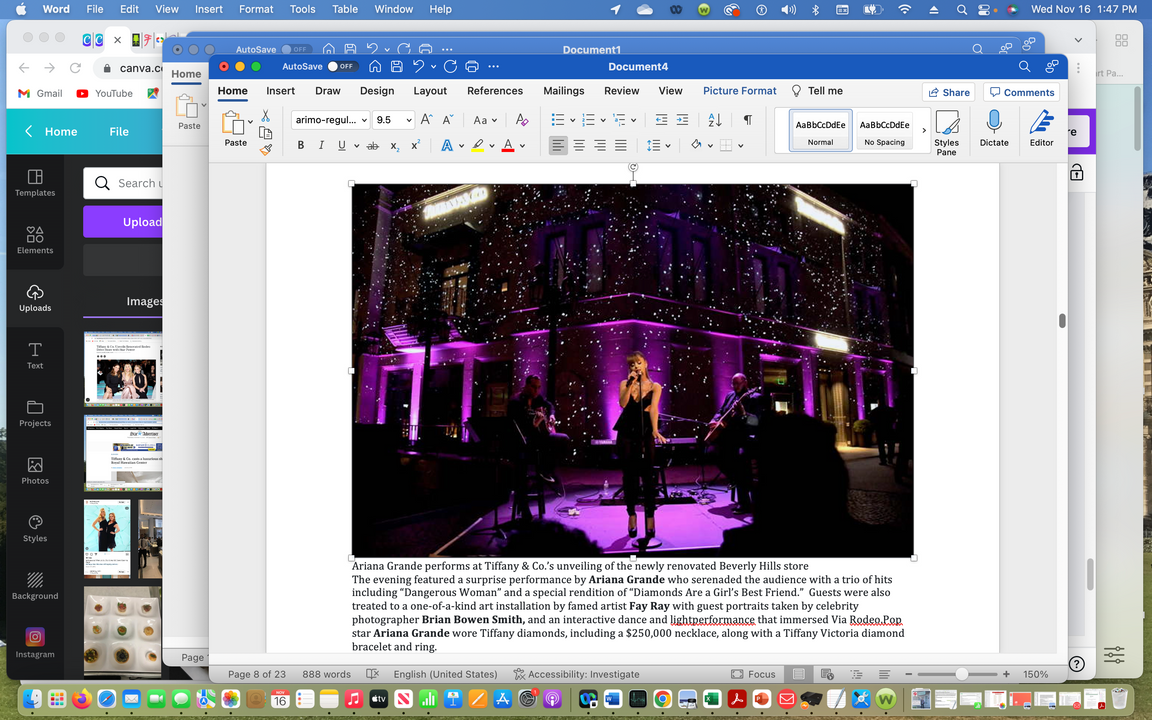
- Previewed high jewelry collection to media and top clients at launch event with celebrities dressed in pieces.
- Entertained clients from US & Canada for a weekend of dinners, cocktails, activities.
- Partnership with nonprofit The Art of Elysium contributed installation at event.
- Performance by Ariana Grande at launch event showcased the prime location.
RESULTS
- Sales: 800% over target
- 180 client guests from U.S. & Canada
- 154 media placements
- 1.5B impressions
- 800M social media impressions
High Profile T Collection T Train Fashion Launch Immersive Experience

OBJECTIVE
RESULTS

Media coverage of the event, collection and creative director in top publications including Elle, Vogue, Harper’s Bazaar, Adweek, New York Observer and social media posts.
Announce new fashion collection, the first with new creative director, positioning brand beyond classic, traditional to fashion-forward and trend-setting to younger self-purchasers.
STRATEGY
Create interactive, immersive experience to engage key audiences and attract attention with a celebrity press event in New York.



TACTICS
- Developed installation inspired by the T in the collection name and New York City, which became the T Train.
- Inside train was master engraver at work and new collection display for purchase.
- Secured celebrity brand ambassadors to generate media attention at press launch event, which included singer Puddles the Clown singing.
- Media attendees represented top fashion, accessories, society, luxury editors at national and local print, online outlets.
- Open venue and train for all New Yorkers, featuring notable DJs for music and male model greeters.





Waikiki Store Opening for
Local & Global Clients


OBJECTIVE

Create visibility to the Waikiki store’s relocation to both locals and part-time residents based in Asia.


STRATEGY


Draw attention to the new store starting months ahead to generate anticipation with news items, while developing a series of events in tandem with new mall host to draw traffic.

TACTICS
- Press release announced new location months ahead of opening to build momentum in Hawaiian and Japanese markets.
- Champagne toast and private tour for press.
- Launch event took place later, timed to Oshogatsu holiday for Japanese tourists and residents.
- Conceptualized different guest experience per store floor, representing local culture.
- Directed production agency to build out installation to promote new collection.
- Devised branded outdoor visuals with greeters in Tiffany blue Hawaiian shirts to attract passersby.
- Ensured dignitary attendees including mayor, CEO, Japanese American actress and influencer Jun Hasegawa, and Magnum P.I. actors.
- Secured weekend open house hospitality.
RESULTS
- Secured 229 guests and $132.6k sales at launch event
- Photo booth resulted in large social media exposure.
- Final opening weekend sales = $1.17M, ~20% above expectations
- Local press and broadcast coverage leading up to event included Modern Luxury, Honolulu Star-Advertiser, K-HON2, Pacific Business News.



OBJECTIVE
Yellow Diamond Tour Press Lunch &
Panel Discussion
Use the Tiffany Yellow Diamond as the news hook to continue drawing attention to the new Vancouver store.
STRATEGY
Publicize first-time appearance of the Tiffany Yellow Diamond at Vancouver store, a famous piece rarely seen outside of New York flagship store, by providing media with a private look at the piece and discussion on its significance ahead of its unveiling to the public.
TACTICS
- Developed panel presentation and press luncheon.
- Requested Tiffany’s Chief Gemologist Melvyn Kirtley as a panelist while PR agency secured former InStyle editor and founding editor of publication, Adventurine as the other panelist and Claudia Cusano of Nuvo magazine as the facilitator.
- Ensured 30 editors attended luncheon and built out top floor into seated lunch venue.
- Featured the yellow diamond display.
- Guided talking points for Melvyn Kirtley.
RESULTS

Coverage in local press such as Nuvo, Vancouver Sun, CTV News, Adventurine, Monte Cristo magazine. Social media exposure from clients.







Men’s CT60 Watch Launch Regional Influencer Events
OBJECTIVE

Get new collection directly into the hands of a younger demographic.
RESULTS


Drove new clients to stores via social media, blog, online and local coverage:
STRATEGY
Use influencers to host cocktail events in four markets to drive buzz and local influentials. Feature branded, hands-on watch display installation.





TACTICS

- San Francisco: Actor Liev Schreiber and Ariel Adams of A Blog to Watch hosted event in-store, showcasing customization.
- Los Angeles: Chefs Jon & Vinnie hosted, catered private event at their Italian pizza restaurant.
- Houston: Event at hip Camerata wine bar owned by local influencer Paul Petronella featured wine tasting from sommelier, David Keck, and DJ Sun.
- Toronto: Arranged events with Ben Mulroney, E! Canada host: 1) with celebrity friends and menu by Chef Corey Vitello, 2) for top clients at store.





NFL Super Bowl Trophy Unveiling
OBJECTIVE


As designers of the Vince Lombardi Trophy, leveraged partnership with NFL to host a Super Bowl themed experience to drive traffic to the local store and build brand awareness to Tiffany’s craftsmanship.

STRATEGY
Annually co-host in-store event at Super Bowl host city with NFL for trophy unveiling to press and top clients the week prior to Super Bowl, followed by week of in-store public viewing, educating on trophy design.


TACTICS
- Coordinated trophy logistics with NFL.
- Oversaw brand representation of both Tiffany and NFL.
- Managed multifaceted cocktail event including production of trophy’s unveiling display.
- Created event flow for staged presentation.
- Secured NFL player alumni to lead presentation.
- Wrote remarks for Tiffany and NFL speakers.
- Ensured media attendance and determined media list with Tiffany and NFL media relations reps.
- Designed event for wives of the NFL players, past and present with a private Breakfast at Tiffany.
RESULTS
- SF: 176 attendees, 5 NFL alumni players
- Indianapolis: 180%
sales growth vs prior week with 118 attendees
- Phoenix: 4M media
impressions, 204 attendees.
PR & Marketing Campaigns
Achieving Media Awareness through PR Strategies to Cultivate Press Coverage for the Following Brands:
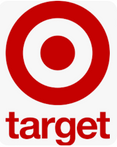
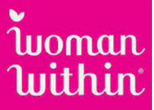




Target’s Black Friday 2-Day Sale Celebrity Stunt
OBJECTIVE
To generate distinct attention from competition to consumers during the critical shopping season
STRATEGY
Mobilize media around a gyro stunt challenge arranged between the brand and David Blaine in Times Square the day before Thanksgiving. Idea was to grant 100 children a dream holiday shopping spree when completed.
TACTICS
- Culled list of targeted news, retail and entertainment weekly and daily media.
- Presented press release to invite media to the stunt in Times Square for photo coverage, stressing the charity-giving element at the core.
- Supported event needs on-site, wrangling media and providing information.


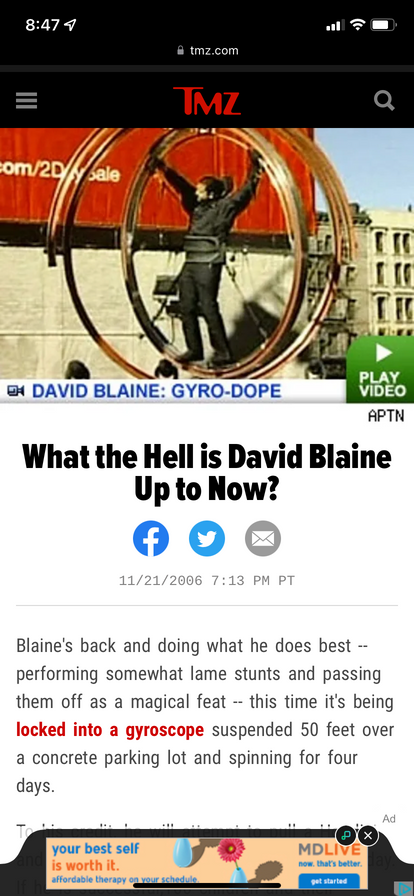


RESULTS
Secured coverage in United Press International (UPI) that picked up all over the US, including Gothamist and TMZ.

Rebranded Lane Bryant Catalog as
WomanWithin.Com
OBJECTIVE
To ensure seamless transition of online fashion brand’s customer loyalty from Lane Bryant to "Woman Within" name.
STRATEGY
Engage and expand the community from the current customer base with content through the brand’s newly appointed brand ambassador, former plus-size model Christine Alt.
TACTICS
- Developed and executed comprehensive PR strategy, organized into a timeline of media outreach activity.
- Launched web page for community blog featuring model Christine Alt with Trend of the Week topics for online chats.
- Online videos were developed to present weekly fashion tips from influencer.
- Directed Fall look book production, conceiving its layout like InStyle magazine’s “Instant Style” fashion pages, working with brand to oversee photo shoot and select outfits.
- Conducted heavy media outreach based on these topics.



RESULTS
Achieved 130 million media impressions in six months


Launched Free Video Chat Tool, Skype
OBJECTIVE
To generate buzz to revolutionary new communications tool to consumer media to reach targeted demographics and boost new customer sign-ups.
STRATEGY
To create guerrilla marketing campaigns to form opportunities to interact live and directly with target audiences and immerse them with this tool, getting them to try the product live. To use these interactions for case studies to present to media for further coverage. Also, to harness celebrity relationships into promotional opportunities.
TACTICS
- Developed comprehensive PR strategy, organized into a "Skype College Tour" - pop-ups, live demos, sign up stations, giveaways.
- “Skype Days of Summer” promotions set up at ex-pat go-to hangouts like Tea & Sympathy.
- Celebrity Promotions: "Military Dads" recorded messages to military from celebrity fathers; "Skype-A-Celeb" charity auction featured on eBay.

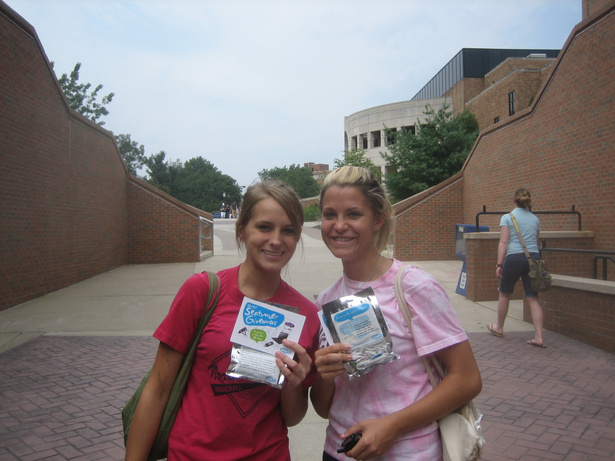



Worked with Harris interactive to create an online survey for USA Today for Mother’s Day.

RESULTS
- Achieved 20+ million media impressions.
- Secured 200 sign-ups, 100 demo calls/day, 10k+ Skype packs distributed.
- Reached 300k UK ex-pats, 10 print ads in Japanese US media, feature stories in 500+ Hispanic news outlets.

Launched Free Video Chat Tool, Skype
BY JAMES GILDEN
APRIL 16, 2006 12 AM PT
SPECIAL TO THE TIMES
KEEPING in touch while away from home can be expensive, especially if you or a loved one is traveling abroad. Hotels often add huge surcharges for calls made from the room, cellphone international roaming charges can be outrageous, and friends or family who need to call while you are in a foreign country can be charged ridiculous amounts by their phone company.
For example, international roaming charges for cellphones may increase the cost of a call by 20 times the normal rate. I just added $56 to my cellphone bill for only 41 minutes of calls that I made and received on a September trip to London, which worked out to $1.37 a minute, including taxes.
A five-minute local phone call from the Park Lane Hotel in London in November 2004 cost $11. Without an international calling plan, you are at the mercy of the phone company when you’re calling abroad. Without such a plan, you can pay $2 or more per minute.
A five-minute local phone call from the Park Lane Hotel in London in November 2004 cost $11. Without an international calling plan, you are at the mercy of the phone company when you’re calling abroad. Without such a plan, you can pay $2 or more per minute.
Some travelers use prepaid calling cards, which can cut the cost of calling while abroad. And now, thanks to the wide availability of broadband Internet service, travelers have more options for keeping in touch at a fraction of the traditional cost.
Computer telephony, or VoIP (which, translated from geek speak, means “voice over Internet protocol”), allows you to make and receive calls between computers for free.
All VoIP requires is a microphone to talk into and speakers or a headset to listen.
Phone, cable and various Internet companies have jumped on the VoIP bandwagon. Some, such as Vonage and Verizon VoiceWing, charge set-up and monthly service fees. Others, such as Skype, Yahoo, MSN and Google, allow free voice calls between computers.
Some VoIP services, such as Skype, also have options that allow you to call a land-line number for a fraction of what you may have been paying for a long distance call.
In some cases, these services let you set up a local telephone number almost anywhere in the world or forward local calls to a foreign number for pennies per minute.
I decided to try 3-year-old Skype, which has 75 million registered users worldwide. Signing up is free and involves downloading a small software program. There are no adware or spyware programs attached to it, Skype says.
Using the $10 Skype starter kit, which includes a microphone and earplug that I hooked into the back of my computer (the plugs are color-coded so even the ungeek among us can pretty easily figure it out), I experimented by calling Michele Yamada, another Skyper.
Yamada, a graduate student from Brisbane, Australia, has been using Skype for about 18 months to keep in touch with family and friends around the world.
She also uses the free service to keep in touch with her husband, Tony, who recently moved to New Zealand for a new job, as well as friends who are fellow Skypers. Recently in California for a program at USC, she allowed me to interview her using Skype.
The quality of sound was surprisingly good. I could hear her perfectly and vice versa.
In selecting Skype over some of the other services offered by MSN, Yahoo and Google, Yamada, a self-described early adopter of technology, said she was swayed by Skype’s interface and its sound quality.
Besides the free computer-to-computer service, Yamada uses the SkypeOut option to dial up her parents in Japan and her husband’s 92-year-old grandfather on their land lines.
Skype charges as little as 2 cents a minute to call a land line, although rates vary by country, and calls to cellphones can be much more. (See www.skype.com/products/skypeout/rates.)
Minutes can be bought, using a credit card or PayPal, in increments of $10 and $20.
To test the quality of SkypeOut, I called my parents’ land line to speak with my father. He sometimes has difficulty understanding me when I call from one of my regular phones. The quality of the Skype call was excellent, and he reported no difficulty hearing.
There are several ways Skype can cut phone costs for travelers. If you carry a laptop, any place that has a Wi-Fi connection can become a phone booth.
The SkypeIn option allows you to have a local telephone number anywhere in the world. For example, my Skype number could be a Los Angeles 310 area code number that would ring my computer.
Callers could keep in touch with me at local rates no matter where I was. A three-month subscription (which comes with free voice mail) for a local number is $12; a one-year is $38.
The good and the bad
THERE’S also a call-forwarding option with SkypeIn. That means you could have your SkypeIn number forwarded to your hotel or any other number at your destination (including a cellphone with free incoming calls).
The one downside of Skype I found: When an Internet connection was slow, there was a noticeable delay, not unlike a poor quality cellphone connection.
Skype does not bill itself as a replacement for all land-line uses.
But the superior voice quality, ease of use and cheap long distance rates make it attractive. After all, what’s not to love about a 10-cent call to London?
Your callers will be charged for a local call to your SkypeIn number. You would be charged only the cost of forwarding the call.
FedEx & Amazon.com Partnered Harry Potter Book Distribution

OBJECTIVE


To generate awareness for FedEx Home Delivery and reinforce the brand’s technological innovations and ability to deliver B2C e-commerce successfully. To continue to build credibility for FedEx Corporation and its integrated network of operating companies.



STRATEGY

Positioned FedEx as the premier carrier to fulfill the “unprecedented e-commerce distribution” [at the time].


TACTICS

- Worked in tandem with FedEx corporate to vet and respond to relevant media inquires.
- Conducted comprehensive media outreach to business, technology, broadcast and regional press in partnership with the consumer group focusing on the consumer publications.
- Developed and distributed b-roll footage.
- Team supported an AP photographer to capture a FedEx Home Delivery contractor delivering the book to children.
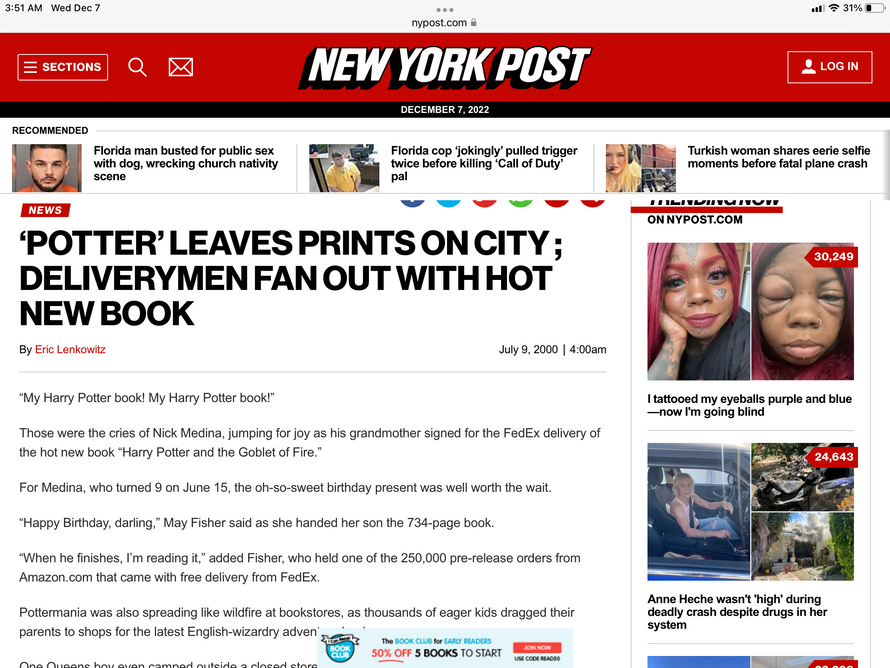




Establish New Music Website Brand, Gigabeat.com
OBJECTIVE
To build awareness for the new e-commerce music startup for the brand to grow customers. To build a business reputation to secure a second round of financial funding.
STRATEGY
Introduce Gigabeat directly to music lovers who would be interested in all-in-one-place music downloads, as well as drive media coverage in technology, Bay Area and business press.
TACTICS
- Worked with New York team to premiere Gigabeat at NYC event for first peek with live demos of the site. Bands Train and Trinket performed to drive attendees. B-roll was created, including the CEO and interviews with the band discussing the website.
- Created press materials to use for media outreach, securing interviews with key Internet, technology, finance, business, trade and San Francisco regional press.






RESULTS
- I secured front-page article in San Francisco Chronicle, Investor’s Business Daily, and four-star review from PC Magazine.
- The press coverage attracted interest from Napster to acquire website.
- I received the Ketchum Five-Star Award for my media relations contributions for this client.

Corporate Communications PR
Achieve Expert Positioning by Creating Media Awareness through PR Strategies Based in Thought Leadership for the Following Brands:


PR Campaign to Position Yahoo! As Job Search Leader

CHALLENGE
Acquired by Yahoo!, HotJobs was seen as the "third" online job site based on site traffic and number of job postings, while the competition continued to thrive and attain larger visibility.
OBJECTIVES & STRATEGY
TACTICS
RESULTS
- To enhance the perceived value of Yahoo! HotJobs among employers, recruiters and job seekers.
- Achieve a leadership Share of Voice in top-tier HR trade media by utilizing spokespeople as the industry/business expert, career expert and product expert.
- Strongly emphasize a "local" message throughout all external communications.
- Position the brand as a leading expert and resource in the job search for college graduates and overall workforce by transitioning media relationships to ongoing vs. one-off.
- Timing: Launched in January, biggest month for job seekers.
- Employee Index: A branded monthly analysis of U.S. online job demand from employee perspective to pitch to media.
- Created surveys: 1) to define the top 5 attributes most valued in an employee per recruiters and what pop culture jobs most employees would want, with third party research firm and 2) to discover college seniors' plans for a job after graduation.
- Raise visibility with statistics and insight from the brand's thought leaders for the year ahead gathered from internal resources, launched with press release and on website landing page.
- Media coverage featuring surveys and utilizing brand spokespeople as a job hunt resource in stand-alone articles or included amongst competitors.
- Gained visibility in local, national business, B2B and trade publications, positioning the brand as a go-to thought leader and resource in the industry.
- Coverage resulted in 100+ outlets and 103,435,167M+ media impressions.
The next pages feature a sampling of resulting press.

PR Campaign to Position Yahoo! As Job Search Thought Leader
Coverage for Yahoo! Survey on Favorite TV Show Jobs
Conducted a survey as part of the outreach campaigns Provided consumer media with fun statistics to position Yahoo! HotJobs as a career expert.
This was a way to align the brand with a consumer audience by connecting pop cultural relevancies.
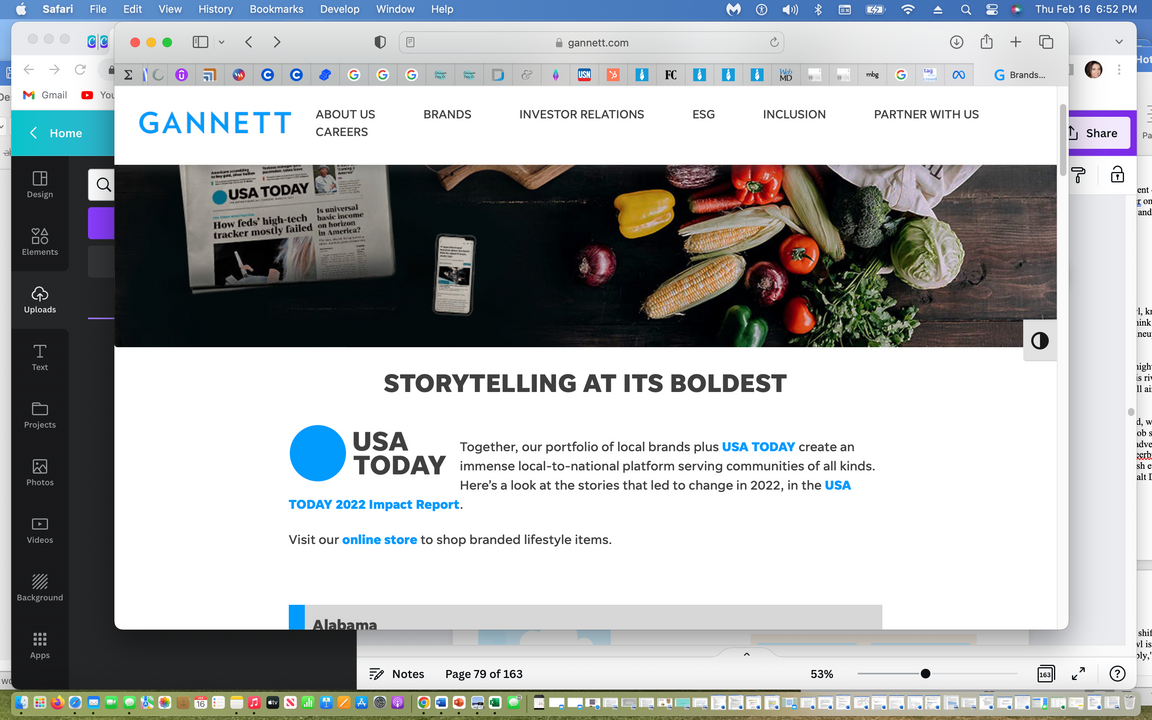

January 17, 2005
People like Everybody Loves Raymond, and a survey by Yahoo! Hot Jobs shows that many of them would like Raymond's job, too. About 40% of men surveyed called Ray Barone's sportswriter job the most desirable on TV. Only 15% picked the fast-lane profession of plastic surgery practiced by Christian Troy on F/X's Nip/Tuck. Women were split between interior designer, such as Grace Adler on Will & Grace (24%), and a spy la Sydney Bristow in Alias (23%).

February 7, 2005
A survey conducted by Yahoo! HotJobs has found that 40 percent of American men who responded would like to have Ray Barone's job as a sports writer on Everybody Loves Raymond, while only 15 percent chose the sex lifestyle of plastic surgeon and playboy Christian Troy from Nip/Tuck.

PR Campaign to Position Yahoo! As Job Search Thought Leader
I secured business
coverage to brand Yahoo!
HotJobs as a leading
expert and resource in
job hunting.
Positioned the VP of Marketing as a
spokesperson and expert
in key topics such as job
search, resumes, how to
leave your job and
interviewing.
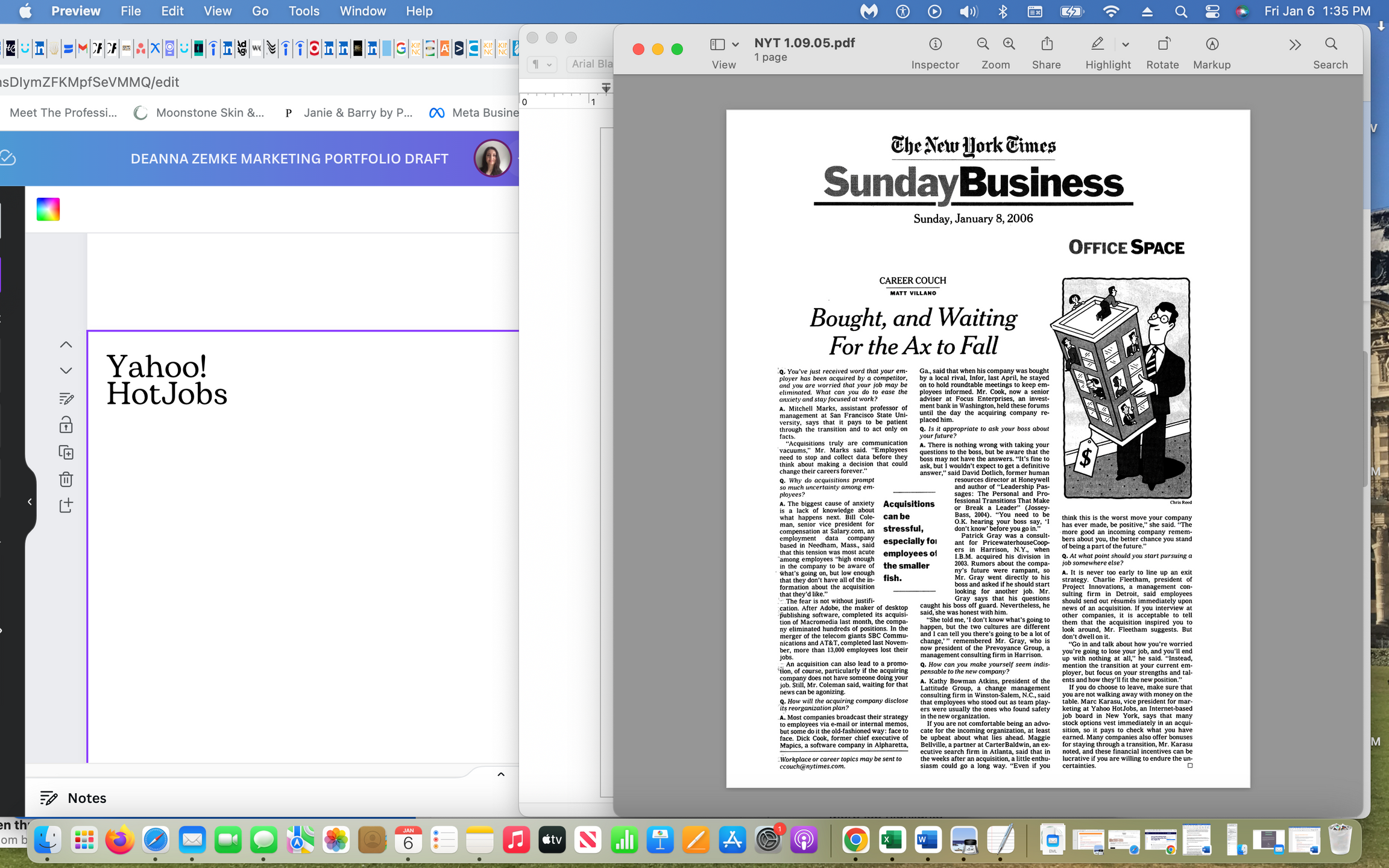




Corporate Communications: Executive Positioning for Towers Perrin
Objective
Strategy
Tactics
Results
Position Towers Perrin as the most innovative thought leaders and the “go-to” resource for solutions on several core human resources subjects: HEALTH CARE COSTS, TALENT MANAGEMENT, WORKPLACE, RETIREMENT, EXECUTIVE REWARDS, HR SERVICE DELIVERY.
Leverage the company’s deeply researched studies to generate short term and long-term media coverage in both national and trade press and broadcast by developing a cache of story ideas per each that can be seeded in the media throughout the year.
- Wrote press releases to announce each study (survey), calling out key data points from each to use for upcoming articles and offering the corresponding consultant as a resource.
- Developed thought leadership platforms such as byline articles that I wrote on behalf on executives to promote their expertise on the given HR subject matter.
- Stretch out stories from resulting corporate studies on numerous HR issues so that data will serve as support points for the story ideas rather than as news in and of itself.
- Promote the company through byline articles and speaking opportunities.
- Coordinate press tours for larger studies to provide desk side media briefings with business and trade press.
- One of the lead health care consultants became a regular go-to expert on CNBC news programs for his keen commentary.
- Top-tier business publications, such as Time, U.S. News & World Report and BusinessWeek and consistently used annual survey data in relevant articles.
- Executives were quoted in various articles, including citations as authors of byline articles, that helped position the brand as thought leaders.
- Consumer media began picking up the survey data and featuring it in stories to different audiences, such as Shape magazine.
The next pages feature a sampling of resulting press.
Corporate Communications: Executive Positioning for Towers Perrin

Translated complicated health care cost survey findings for business, online, broadcast coverage, including garnering placements in consumer media with expert quotes and survey data. CNBC began featuring the executive as a go-to expert source in his field.

This piece fully focused on the survey with quotes from executive and expertise from the interview.








Corporate Communications: Executive Positioning for Towers Perrin



Coverage resulted from a job satisfaction survey, quoting not just the survey, but an executive as well. It further calls attention to the brand's leadership in the workplace arena to a consumer business audience.
This was featured as part of an "Inside Business" bonus section in Time magazine.

Corporate Communications: Executive Positioning for Towers Perrin
Byline Articles
I have successfully pitched article topics to trade publications that accept brand written submissions. As a result, I served as the ghost writer, writing in the executive's voice to demonstrate his or her expertise in the given subject area and showcasing their names in the byline.
The following features one example written for Towers Perrin.

Corporate Communications: Executive Positioning for Towers Perrin

Employee Benefit News: "To Boost FSA Enrollment, Apply Marketing Principles"
Engaging consumers in their health care has become a mantra for U.S. employers. Effective health care consumerism tools help companies meet their goals to provide needed health care benefits while controlling costs.
To accomplish this challenging goal, some innovative companies have uncovered a way to transform a sleepy little benefit into a vehicle to support the message - and impact - of consumerism: the health care Flexible Spending Account (FSA), which allows employees to set aside pre-tax wages to pay for health care expenses not paid for by a traditional health care coverage.
The greatest obstacle lies in getting employees on board, in the face of regulations which threaten consumers with "use it or lose it." But substantial results can be achieved by applying the basic tenets of consumer marketing: consumer research, promotion and decision-support tools which position the FSA in the consumer's language, not in plan-design jargon. The result: increased enrollment in the flexible spending account, greater contributions and as a side benefit, significant FICA savings for the employer.
Begin with the consumer in mind
Amidst the sea of government regulation and legal frameworks that surround HR programs, it can be easy to lose sight of the benefits consumer. Yet HR executives have begun to realize an interesting correlation between the purchasing behavior of employees and those of mainstream product consumers. The person who is selecting and using employee benefits is not just purchasing prescription drugs, physician services and braces, but also regularly buys ipods, cars and refrigerators. HR executives can study effective marketing campaigns for products such as laptops and apply their concepts to motivate these same consumers to engage in health care consumerism.
Take a lesson from consumer product companies that live and breathe consumer insight. When they plan promotions, they start with the consumer. A brand manager would never consider launching a new product without learning everything he or she could about both the user and buyer of their product, especially since these may be different people. When HR programs are launched, they often have the same or greater impact on companies' net profits as any given product would, yet there is often very little consumer insight, by comparison, to ensure success.
Innovative employers are now borrowing from consumer research techniques. They're starting by testing new programs with conjoint (trade-off) analysis to determine the choices employees will make, and the impact of those trade-offs in quantifiable terms such as retention and perception of program fairness. They're then translating this insight into marketing campaigns designed to influence employee benefit "purchasing" behavior.
Deploying consumer behavior lessons
Few would select medication with the most warning labels if there were others to choose from, cheaper or not. If "Be Careful!" signs are constantly drilled into consumer minds, what type of message does that relay? Savvy HR executives who want to increase FSA participation understand that negative messages will repel new subscribers. In an attempt to protect both company and employee from the downside of the FSA - by featuring the plan's "use-it-or-lose-it" feature prominently - employee communication may have sent too strong of a buyer-beware message, immobilizing or dampening participation in the process.
Article continued below

Corporate Communications: Executive Positioning for Towers Perrin

P.2: Employee Benefit News: "To Boost FSA Enrollment, Apply Marketing Principles"
A more positive message focuses on the opportunity for employees, not the possible hassles that breed fear. For example, some companies have emphasized how an FSA enables employees to give themselves a virtual pay raise by taking advantage of its tax-free feature. Others have looked to classic marketing techniques to "sell" FSAs. A major consumer goods packaging company recently completed research that shows that even in regard to our health, we are a society of spenders, not savers. Using this research, some employers have focused their FSA communications materials on the money consumers save on FSAs that can then be spent on other things. In short, by saving upfront on taxes when purchasing prescriptions and other health products and services that is, the things they need consumers have more to spend on the things they want.
This is just what a large Midwest manufacturing company did by rolling out innovative communications along with a consumer-focused advertising campaign. This approach resulted in a 41% increase in participation in the company's FSA plan and a 35% increase in contributions.
Simple solutions, click here
Most computers in the U.S. today have a small button at the bottom left of the screen that changed the way we work. As health care consumers, employees also need a "Start" button for benefits to boost their confidence to act decisively in their own best interest. Some of the most effective tools are so user friendly that they take the fear out of getting started, including debit cards and desktop tools and resources.
An increasingly popular tool is the debit card. It transforms the concept of savings into a product that consumers are already comfortable using to pay for purchases. Debit cards also simplify the interaction by removing, in many cases, the complexity of paper substantiation and the delay of reimbursement that can accompany FSA purchases. One company recently realized a 50% increase in FSA participation corresponding to its introduction of the card.
Even with a debit card, employees inevitably ask, "How much do I set aside?" This is where calculators and savings planners can make a difference. An FSA calculator is a good way to kick start FSA subscribers' transformation from enrollees to active participants. Again, while consumers understand the need for an FSA, they find it difficult to predict their out-of-pocket costs in advance, and fear drives them away. The calculator instills confidence by helping consumers understand what their costs will be and propels them to try the FSA experience.
Doing it right
There is still one more piece of the puzzle left that can unite lessons learned and available tools in a cohesive manner. Paige Claus, benefits manager for McLane Company, Inc., a leading distribution company, discovered what the combination of tools, consumer insight and hard work can deliver: a 104% net increase in FSA participation and a 72% increase in contributions.
McLane with 14,500 employees in 40 divisions decided that to make an impact and encourage employees to respond, it would do open enrollment right. That translated into preparing employee communications materials that highlighted four main take-aways, followed by consumer-oriented messages and tools that included a health care FSA calculator, simple steps to get started and an introduction to the debit card. Most important, HR managers in each division were trained to deliver 90-minute enrollment sessions at each of their sites. This high-touch approach, reinforcing key messages, resulted in a jump in enrollment from 9% to 19% of eligible employees.
Engaging employees in the health care process takes a lot of work, but is possible by keeping the consumer in mind, translating messages positively and providing user-friendly tools. As we embark on greater usage of account-based plans and more complex plan designs, the lessons from this benefit can be applied to attain an even greater impact in the future.
Steven Blumenfield is a principal in the Health and Welfare Practice at Towers Perrin’s Parsippany, N.J., office. He has used his marketing and business background to help clients understand and set up consumer-oriented messages for benefit plans. Martha Terry is a principal in the Change Implementation Practice who operates out of Towers Perrin’s Boston, Mass., office. She is the practice leader for Rewards Communications and has helped companies with innovative and effective approaches to engage employees in a number of important HR programs. - E.B.N.
Let’s Connect
I’d love to discuss how I can bring my expertise in PR and communications strategy, media relations and copywriting to your next project or role.
Contact Info
LinkedIn Address
http://www.linkedin.com/in/deanna-zemke
Email
deanna@truebluecomms.com
Website
https://www.truebluecomms.com
